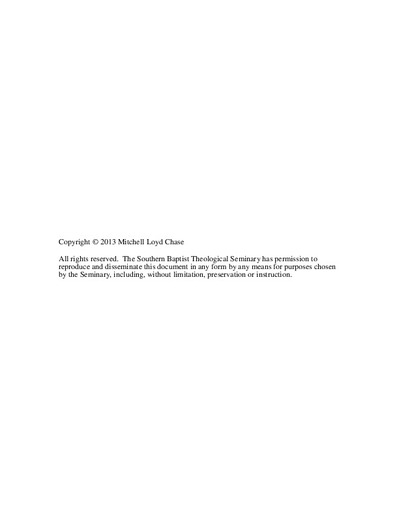Resurrection Hope in Daniel 12:2: An Exercise in Biblical Theology
Subject
Bible. Daniel XII, 2--Criticism, interpretation, etc.Bible. Daniel--Relation to the New Testament
Bible. New Testament--Relation to Daniel
Resurrection
Abstract
This dissertation argues that Daniel relied on earlier Old Testament texts and theological convictions when he expressed the hope of bodily resurrection, and his expression informed and shaped subsequent nonbiblical and biblical authors. Chapter 1 introduces the thesis, methodology, and preliminary issues pertinent to the following study. Chapter 2 is a survey of research. This survey shows what proposals scholars have made regarding the emergence of resurrection hope in the Old Testament, it references the intertestamental literature that scholars believe Daniel 12:2 influenced, and it cites the New Testament passages that scholars believe may echo Daniel 12:2. Chapter 3 sets Daniel 12:2 in its context. Relevant considerations include the structure of the book of Daniel, the precursors of resurrection in the book, and a detailed exegesis of Daniel 12:2. Chapter 4 examines the seeds of resurrection hope sown in the Old Testament prior to Daniel 12:2. This study progresses through the Law, Prophets, and Writings. By looking for theological convictions, images, and expressions that advocate a belief in resurrection, it will be evident Daniel 12:2 was not the first occurrence of such hope. Instead, Daniel 12:2 had many implicit and explicit precursors in the Law, Prophets, and Writings. Chapter 5 focuses on the intertestamental literature in order to show and explain how Daniel 12:2 influenced authors of pseudepigraphal and apocryphal literature. Chapter 6 focuses on the New Testament authors and explains the influence of Daniel 12:2 on the Gospels, the book of Acts, the Epistles, and the Apocalypse. This influence is not only lexical but conceptual, and it is the latter kind of influence that has been neglected with regard to Daniel 12:2. Chapter 7 is the conclusion. It summarizes the evidence presented in the foregoing chapters as well as reiterates the conclusions drawn from this evidence.

